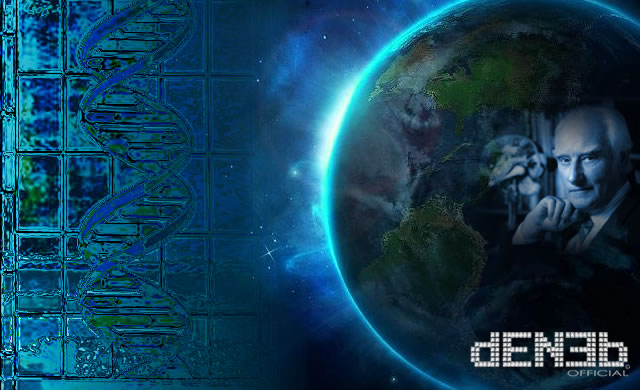
Francis Harry Compton Crick (Northampton, 8 giugno 1916 – San Diego, 28 luglio 2004) è stato uno scienziato britannico, conosciuto al pari di James D. Watson, per aver realizzato nel 1953 il primo preciso modello della struttura del DNA.
Struttura del DNA
L’esito di quella che apparve subito come una sensazionale scoperta destinata a cambiare il corso della storia della biologia venne pubblicato nello stesso anno dalla rivista scientifica Nature e valse ai due scienziati un premio Nobel.
Per giungere a definire graficamente la struttura del DNA, Crick – ricercatore all’Università di Cambridge – e Watson – che operava in quella dell’Indiana – si basarono su ciò che gli studiosi che li avevano preceduti avevano scritto in materia. Costruirono il modello sulla base di un bozzetto eseguito dalla moglie pittrice di Crick, Odile Speed, servendosi di semplice cartoncino e filo di ferro. La sua biografia, scritta da Matt Ridley, ha vinto nel 2007 il Davis Prize, assegnato dalla prestigiosa Hystory of Science Society.
Panspermia guidata
Francis Crick, assieme a Leslie Orgel, nel 1960 iniziarono a speculare sull’origine del codice genetico. Agli inizi degli anni settanta Crick e Orgel andarono oltre in queste speculazioni e in particolare sulla possibilità che la produzione di un sistema molecolare vivente deve essere stato un evento molto raro nell’universo e che tuttavia una volta posto in essere esso possa essere stato diffuso da un forma di vita intelligente attraverso un tecnologia che consenta viaggi nello spazio, tale processo fu definito “panspermia guidata”. Più tardi Crick dichiarerà di essere stato eccessivamente pessimista circa le possibilità di un’origine terrestre della vita.
Fonte/Leggi tutto su Wikipedia
Francis Harry Compton Crick OM FRS (8 June 1916 – 28 July 2004) was an English molecular biologist, biophysicist, and neuroscientist, and most noted for being one of two co-discoverers of the structure of the DNA molecule in 1953, together with James D. Watson. He, Watson and Maurice Wilkins were jointly awarded the 1962 Nobel Prize for Physiology or Medicine “for their discoveries concerning the molecular structure of nucleic acids and its significance for information transfer in living material”.
Crick was an important theoretical molecular biologist and played a crucial role in research related to revealing the genetic code. He is widely known for use of the term “central dogma” to summarize an idea that genetic information flow in cells is essentially one-way, from DNA to RNA to protein.
During the remainder of his career, he held the post of J.W. Kieckhefer Distinguished Research Professor at the Salk Institute for Biological Studies in La Jolla, California. His later research centered on theoretical neurobiology and attempts to advance the scientific study of human consciousness. He remained in this post until his death; “he was editing a manuscript on his death bed, a scientist until the bitter end” according to Christof Koch.
In October 1969, Crick participated in a celebration of the 100th year of the journal Nature. Crick attempted to make some predictions about what the next 30 years would hold for molecular biology. His speculations were later published in Nature.[56] Near the end of the article, Crick briefly mentioned the search for life on other planets, but he held little hope that extraterrestrial life would be found by the year 2000. He also discussed what he described as a possible new direction for research, what he called “biochemical theology”. Crick wrote, “So many people pray that one finds it hard to believe that they do not get some satisfaction from it”.
Directed panspermia
During the 1960s, Crick became concerned with the origins of the genetic code. In 1966, Crick took the place of Leslie Orgel at a meeting where Orgel was to talk about the origin of life. Crick speculated about possible stages by which an initially simple code with a few amino acid types might have evolved into the more complex code used by existing organisms. At that time, everyone thought of proteins as the only kind of enzymes and ribozymes had not yet been found. Many molecular biologists were puzzled by the problem of the origin of a protein replicating system that is as complex as that which exists in organisms currently inhabiting Earth. In the early 1970s, Crick and Orgel further speculated about the possibility that the production of living systems from molecules may have been a very rare event in the universe, but once it had developed it could be spread by intelligent life forms using space travel technology, a process they called “Directed Panspermia”. In a retrospective article, Crick and Orgel noted that they had been overly pessimistic about the chances of abiogenesis on Earth when they had assumed that some kind of self-replicating protein system was the molecular origin of life.
Source/Continue reading → on Wikipedia






















Pingback: Ancora sul DNA: E se il famoso segnale “Wow!” fosse all’interno del codice genetico terrestre? – The “Wow! signal” of the terrestrial genetic code | DENEB Official ©
Pingback: Ponte di Einstein-Rosen: Che cosa è un Wormhole? Einstein-Rosen Bridge: What is a Wormhole? | DENEB Official ©
Pingback: Panspermia: letteralmente “semi ovunque”…”Semi Stellari” – Panspermia: literally as “seeds everywhere”… “Star-Seeds” | DENEB Official ©